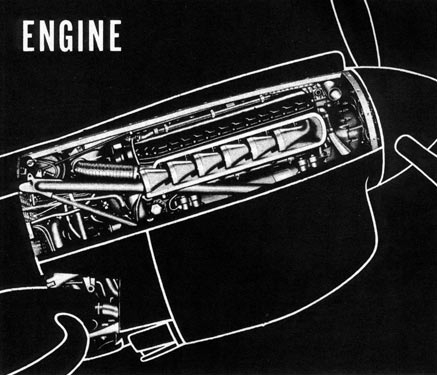|
The 1150-Hp Allison V-1710, a
12-cylinder, V-type, liquid-cooled engine, has a
single-speed internal blower and integral reduction gears
through which the propeller is driven. Models starting
with the P-40 K have a manifold pressure regulator which
automatically maintains constant manifold pressure up to
12,000 feet and eliminates the need for resetting the
throttle with altitude changes. Above 12,000 feet the
effectiveness of the regulator drops sharply.
The Allison is a good, tough engine, but like all
precision instruments it requires proper treatment. You,
as pilot, are the controlling factor in how long the
engine lasts, how well it operates. If you mistreat the
engine, you can be sure of paying for your
carelessness.
|
Watch your prop and throttle settings. excessive
manifold pressure and rpm
cause the engine to detonate.
Detonation is an explosion in
the cylinder head. The normal burning wave, as it travels
across the cylinder head, subjects the unburned portion
of the fuel charge to tremendous temperatures and
pressures. If these forces are great enough, the
remaining fuel charge explodes before it can burn, and
the shock waves from. this explosion rob your engine of
power. If the waves are strong enough, they can blow the
cylinder heads off the engine.
As long as you remain within the normal operating
limits of the engine, you run no risk of detonation.
|
